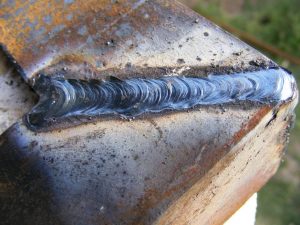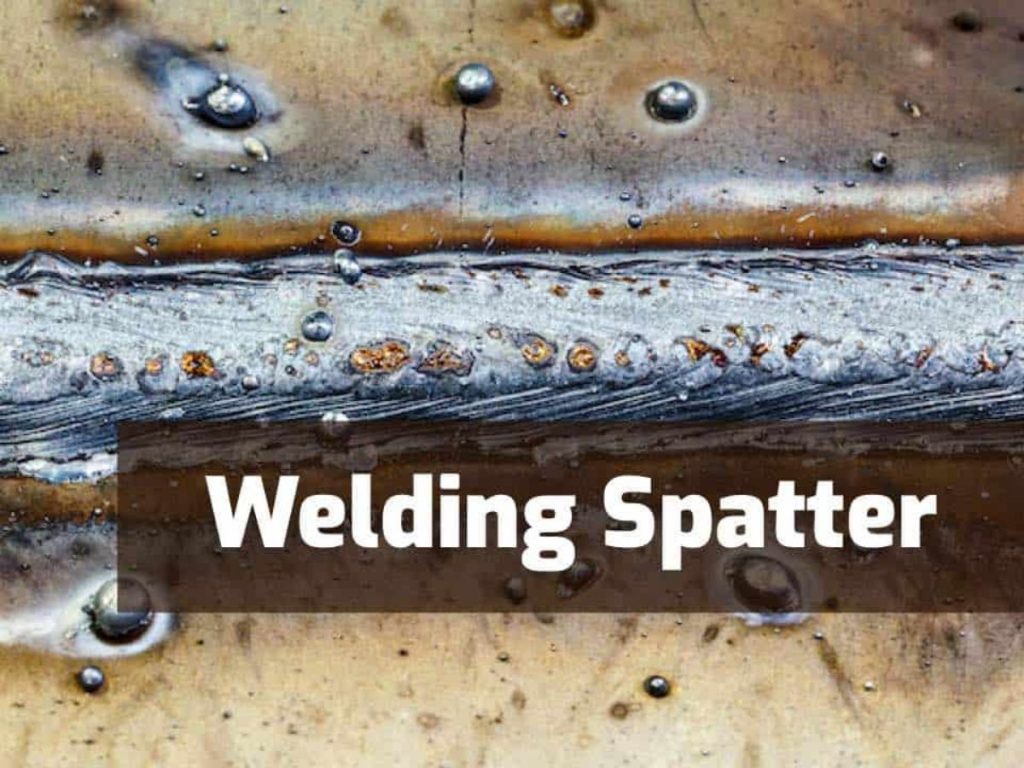There are a number of things you can do to prevent excessive spatter in mig welding. These include avoiding push and drag welding techniques and ensuring your work angle does not exceed 15 degrees. Surface contamination can also be a contributing factor to spatter. Read on to learn how to minimize or prevent it.
What is Spatter?
Using the correct technique when welding can reduce spatter. It’s important to make sure the gas flows evenly. A turbulent gas blanket will create more spatter and may cause welding problems. Welders also need to make sure their arc settings are optimal. If they’re too hot, the weld will be too rough, causing spatter. Conversely, welding at a low temperature will cause spatter but can produce a good weld.
A number of other factors can contribute to excessive spatter. For example, a dirty surface and dirty tools can cause the arc to spit. Cleaning these parts will reduce the spatter, as will using a properly-prepared surface. Also, if your tools are worn out, you may need to purchase new ones.
Another cause of spatter is erratic wire feed. A wire feed rate that is too fast will cause solid metal wire to enter the weld pool, and a wire feed rate that is too slow will vaporize the wire before it reaches the weld. The correct wire feed rate will minimize spatter and minimize the chances of a pool.

Why is Spatter a problem?
Excessive spatter is a nuisance in mig welding, but there are ways to minimize it. By choosing the right material and adjusting the speed of wire feed, welders can prevent excessive spatter. However, excessive spatter can be problematic when the materials used in welding are not compatible. The melted spatter can contact other materials and ruin the welded seams. Another common cause of excessive spatter is using the wrong filler material. This is because two incompatible materials will stick together when they are welded.
While there are ways to reduce spatter in welding, the first and most effective way is to clean up the welding area before you start welding. This will prevent the weld spatter from preventing gas flow. Using an anti-spatter solution will reduce the amount of spatter. You can also use aluminium tape to cover the weld area. Aluminum tape is more resistant to heat, so it won’t melt, unlike plastic tape.
While improperly installed drive rollers are one of the most common causes of spatter, improper wire stick-out can also cause spatter. Using the wrong size contact tip for a particular wire size can also cause spatter. Furthermore, improper wiring can also lead to erratic arcs.
What Causes Weld Spatter and How Do I Prevent It?
Using the right welding technique can minimize the amount of spatter in your mig welding. Excessive spatter can be caused by several factors, including improper wire stick-out, incorrect drive-roll tension, or dirty wire. Using the correct wire speed is another important factor to minimize spatter.
The first step in preventing weld spatter is selecting quality materials. Using quality metals will ensure that your welds are quality, and this will reduce the amount of spatter that you produce. In addition, using the right filler metal will also reduce spatter. Filler metals are cheaper than parent metals but provide extra fill to your weld, which can reduce the amount of spatter.
The most common cause of spatter is using cheaper materials. You may be tempted to buy the cheapest fillers, but those with additives cause additional spatter. Always check the quality of the filler you’re using and choose the best one for the job. Don’t be afraid to experiment with different types of filler.

How to Prevent Material Composition Related Spatte
One of the biggest concerns in welding is material composition related spatter. The problem is difficult to eliminate and can result in a short-circuit if the spatter gets into the working area. However, there are some ways to reduce the amount of spatter that occurs.
The most common way to reduce spatter is by properly selecting the material you’re welding with. Luckily, there are now a number of anti-spatter materials available to keep welding processes as clean and efficient as possible. These include AMPCO(r) Mylar and Nozcap.
Another way to prevent material composition related spatter is to use pre-primed steel, which is designed to have no weld contaminants. However, it is important to remember that coatings can cause spatter issues as well. In order to avoid this issue, it’s important to grind off any coating that may be present on the material. Grinding off this coating will provide a pure surface for the weld, which will result in less spatter.
Another way to reduce weld spatter is to use high-quality filler material. The filler material can also have a significant impact on the amount of spatter, so be sure to clean the area thoroughly before welding.

How to Prevent Setting Related Problems
Setting related problems are not uncommon in MIG welding. High wire speeds and high voltages make wire transfer fast and hot, but they can also cause wire to unravel and undercut. Proper wire tension requires practice and a certain knowledge of the machine’s controls. In addition, it can make changing spools much easier.
To prevent setting related problems, ensure your wire spool is clean and free of mill scale, oil, and other buildup. Also, keep your welding gun spool covered and dry. Without a cover, moisture can build up and cause rust to form. Keeping these items clean is essential for ensuring a quality weld.
Besides, proper voltage and amperage settings are necessary for welding. Too high a voltage will result in excessive spatter. An excessive amount of stick out will also increase spatter. Aim to keep your stick out below 15 degrees.
Welding Technique
If you have ever tried welding, you know that spatter can be a real nuisance. Not only does it waste material, but it can also cause burns if you don’t wear protective gear. Fortunately, there are some simple steps you can take to reduce the amount of spatter you produce during the welding process. First, understand why there is spatter in the first place. There are several different reasons, including contaminates on the surface, machine settings, and even the welding angle.
Another common cause of excessive spatter in MIG welding is improper technique. One common problem is holding the gun too far away from the vertical angle. This is crucial for achieving a perfect weld, and too far from the vertical angle can result in spatter.
Fast welding speeds may also cause excessive spatter. In fast welding, the molten metal will eject from the weld pool at different angles, causing splatter. Slower welding speeds can help minimize welding spatter. Also, stainless steel flux cored weld electrodes can cause a reaction that results in micro fissures in the electrode covering.
Conclusion
One of the most important elements in minimizing excessive spatter in mig welding is the type of gas that is used to shield the work piece. Typically, this gas is argon. Pure Co2 is also available, but it tends to produce more spatter than argon.
The type of weld you use should also depend on the materials being welded. DC-positive polarity is the best option for most materials. Also, you should use a gas lens, which is the perfect way to protect the weld pool from the elements present in the air. Failure to follow these recommendations will result in excessive spatter and can even cause injury.
The first step in preventing excessive spatter is to understand how to identify the cause of it. Too much spatter can damage the integrity of the weld. The main cause of spattering is an excessive amount of heat. Too much heat causes the weld bead to pop, causing large amounts of spatter to fall out. To minimize spattering, you can lower your amperage. Another option is to use anti-spatter oils, which can help ensure that your weld stays robust and strong.

